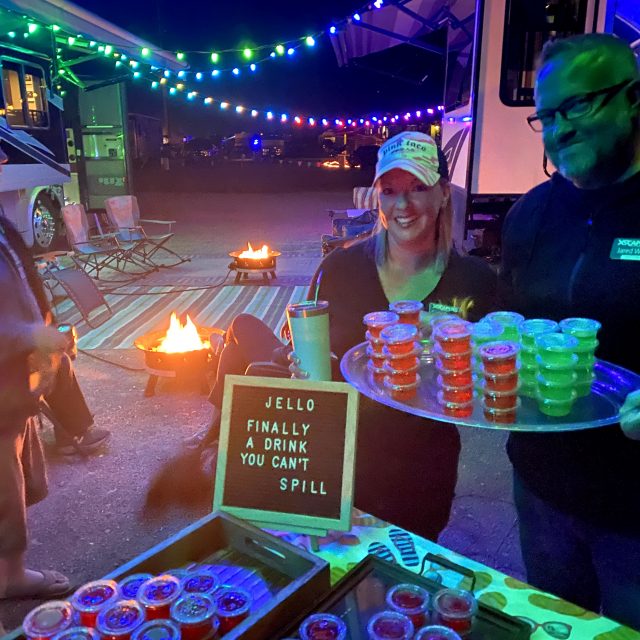8 Things You Need To Know About Full-Time RV Living With Kids
Hitting the road on an adventure of full-time RV living with kids in tow can be an exciting experience for the whole family. Traveling together is a great way to strengthen your family bond while making memories that last a lifetime.
As wonderful as this lifestyle can be for families, it’s not always-smooth sailing. It helps to be well prepared and to understand what to expect.
There are challenges and adjustments to full-time RV living with kids. Read on to learn what to expect and find out if this is the right lifestyle for your family!
1. Choosing The Right RV For Your Family
When it comes to hitting the road full-time with kids, choosing the right RV may be the most important choice to set your family up for success. Picking an RV with enough outside storage, sleeping areas, and room for food storage makes daily living easier for families.
RV Size And Layout Considerations To Meet Your Family’s Needs
The hardest part of finding an RV perfect to go full-time in is to pick the right size and layout. The size needs to be large enough for daily living while still being easy enough to drive and park.
Many families fall into the trap of buying the largest RV floor plans available to have more living space and storage. Then they quickly realize that it can be stressful to drive, park, and limits where they can stay.
If state park or national park camping is a priority for your family, you will need to consider a smaller RV to fit in most of the campgrounds. Always look into the places you most want to stay and their size requirements before purchasing an RV.
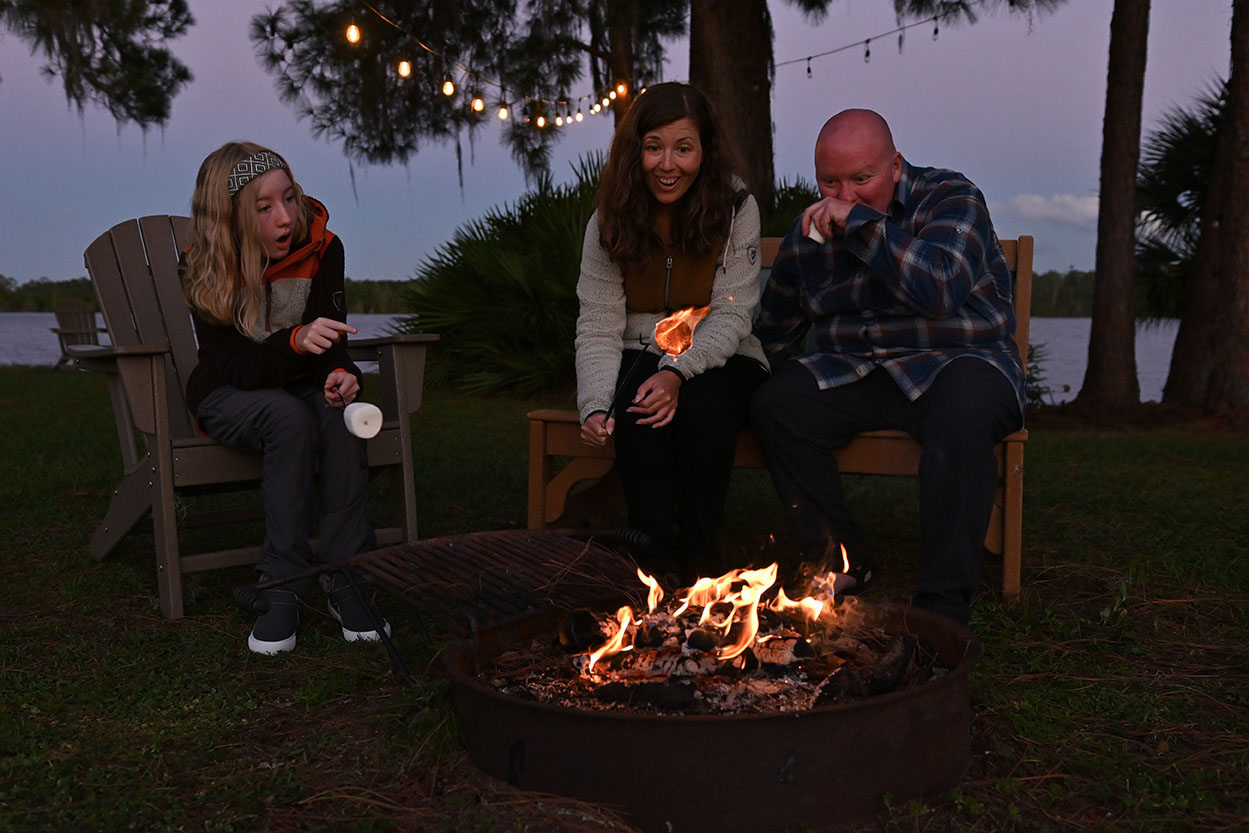
RV Sleeping Spaces For Families
The most popular RV floor plans for families include bunkhouse models and toy haulers. These floor plans offer separate sleeping areas with a door for parents and kids.
Toy haulers are especially popular because the garage can easily be converted into a bedroom space, and the bunks lift to the ceiling for a more flexible daytime play or school area.
RV floor plans with lofts are also a flexible option that creates additional sleeping space while not taking up much living space. Some floor plans have both a bunkroom and a loft for even greater flexibility.
Our first 3 years on the road were in a rear bunkroom fifth-wheel model with 2 bathrooms. While the second bathroom was nice, we felt cramped in the living room seating area.
We decided to switch to a mid-bunk fifth-wheel model with a loft. This gave us a much larger kitchen/living room that worked better for our family. However, I do sometimes miss the second bathroom!
Food Storage Is Important For RVing With Kids
After sleeping areas and RV size, the next most important consideration for families is often the amount of food storage that an RV has. Families go through a lot of food, and you want to have a large fridge and possibly a pantry for dry food storage.
Having enough space for food is helpful in saving time and money. You can stock up at the warehouse stores, like at home, to save on groceries and spend less time on trips to the grocery store. This is especially helpful when you are getting ready to visit a rural area with fewer grocery options.
Our first rig had no pantry, and all of our dry food items seemed to get chucked into whatever cabinet had a little bit of room. It was always hard to find things, and it drove us nuts.
Our current RV has a wonderful pantry space, and it has been a game-changer for our family. Food storage is a large priority for families on the road.
Pro Tip: If you have never RVed before as a family, consider renting an RV for an extended trip. Even just staying in a campground near your house while you try out daily living in the RV can be helpful to see if RV living is a good fit for you. It can also be a great way to try out a specific style or model of RV before you purchase it.

2. Preparing Your Kids For Full-Time RV Living
Regardless of how much you plan for full-time RV living, it will be a transition for the whole family. Some kids do better with change than others, and this is a complete life overhaul situation. Pack your patience and try these tips.
Tips To Adapt To The Small Space
If you haven’t taken RV trips before with your family, consider renting an RV so the kids can see what staying in a small space is like. Or see if a friend or family member would let you use their RV.
Choosing an RV with a designated kid area will help your family with this transition. This way, your kids still feel like they have their own room or space.
Before moving into the RV, do a lot of decluttering and donating/selling in your child’s bedroom. Help them choose their favorite belongings and keepsakes that they have a connection with. Practice keeping their room organized and putting things back into the right location so their small space in the RV doesn’t get out of control.
Establishing Daily Living Routines
Having consistent routines can really help kids make the transition to RV living more smoothly. Work together as a family to create a daily rhythm for chores, meals, hygiene, school, outdoor time, and family time.
Create a routine for stay-at-home days, activity/sightseeing days, and RV travel days. This will help the kids to know what to expect and how to help out to make these days more enjoyable.
3. Education On The Road
One of the hardest transitions that many families face when full-time RVing is homeschooling. This transition can be a challenge even if you are already homeschooling in your house.
Why? It’s extremely difficult to maintain a consistent school schedule when you are always on the go. A solution that many families choose is roadschooling. Keep reading to find out why!
Is Roadschooling Right For Your Family?
By now, I am sure you are wondering, what on earth is roadschooling? This movement in education involves including travel experiences as school. It’s shocking how much real-world learning happens for children through travel.
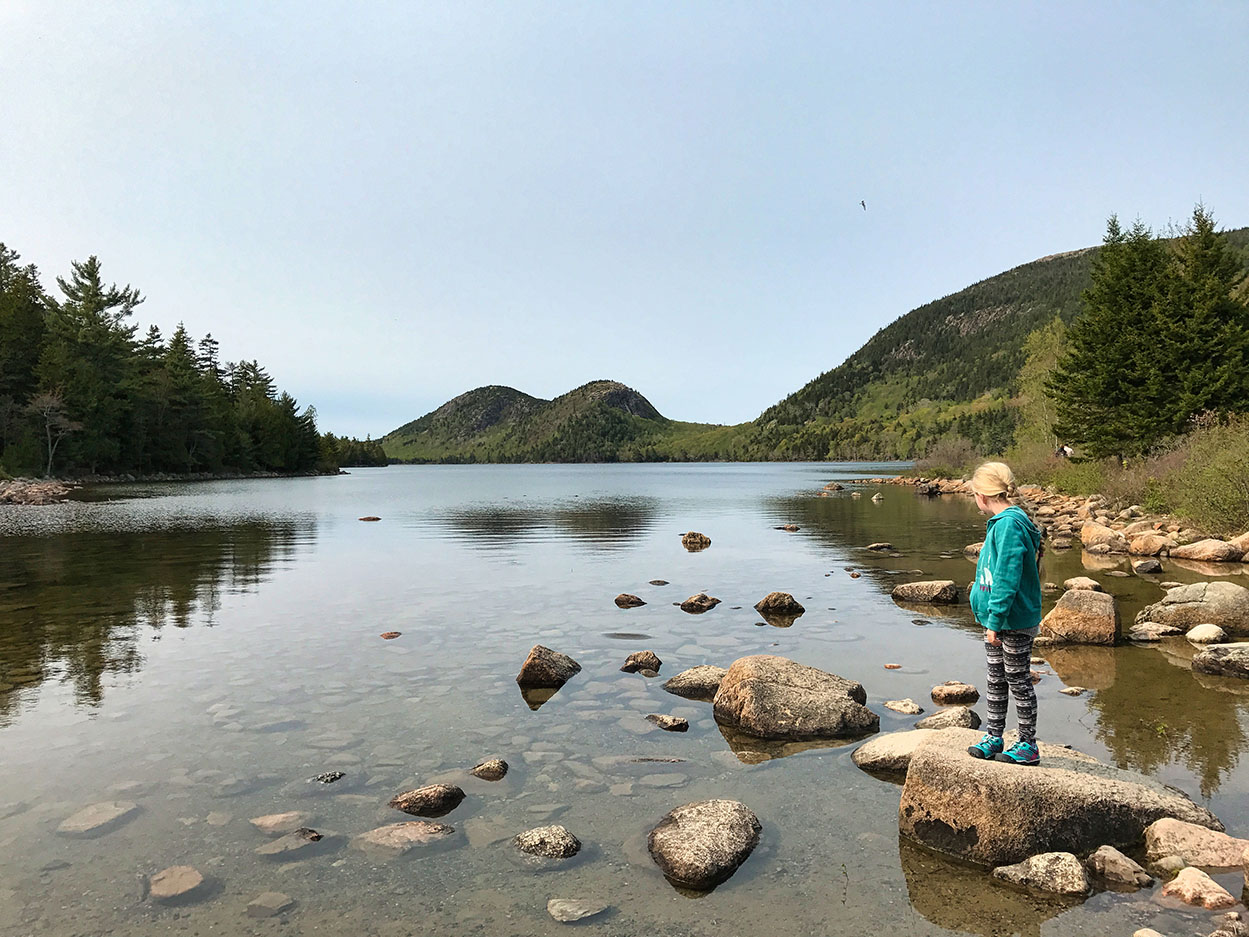
Examples Of Roadschool Learning Experiences:
- geography as you travel
- different cultures in sections of the country
- nature experiences
- outdoor activities such as hiking, paddling, geocaching, etc.
- weather and wildfire experiences
- topography, altitude, and geology
- meeting people from all over the country and the world
- museums
- nature centers
- state park and national park Junior Ranger Programs
- outdoor survival skills and map reading
Every family that roadschools does things differently to meet their individual family’s needs. Some families combine travel learning with a more traditional curriculum, while others roadschool as part of an unschooling approach. There is no wrong way to roadschool!
Flexible Homeschool: Planning School Around Your Travels
There are a mindblowing amount of homeschool curriculum programs available to choose from. Some will work better on the road than others. Consider your internet needs and if an online program or a curriculum with books works best for you.
Regardless of the program that you choose, it helps to find something that is flexible enough to work around your travel schedule. If you try to travel around your homeschooling, it will be difficult to see and enjoy the experiences out on the road.
Consider prioritizing the core subjects and fitting in the extra subjects when there is time. It helps to embrace learning while in the car or RV. Travel days don’t need to be wasted time and can be a great opportunity to catch up on school.
Also, consider doing school whenever you aren’t out exploring. For example, our family prefers to sightsee and go hiking on the weekdays when crowds are at their lowest. We like to stay home and catch up on work and school during the weekends.
We also enjoy doing school in the morning and heading outside in the afternoon. This way, we get school wrapped up and still have plenty of time to explore. Don’t be afraid to do school at odd times during the day or even at night if it works better with your schedule. This is your adventure, and anything goes!
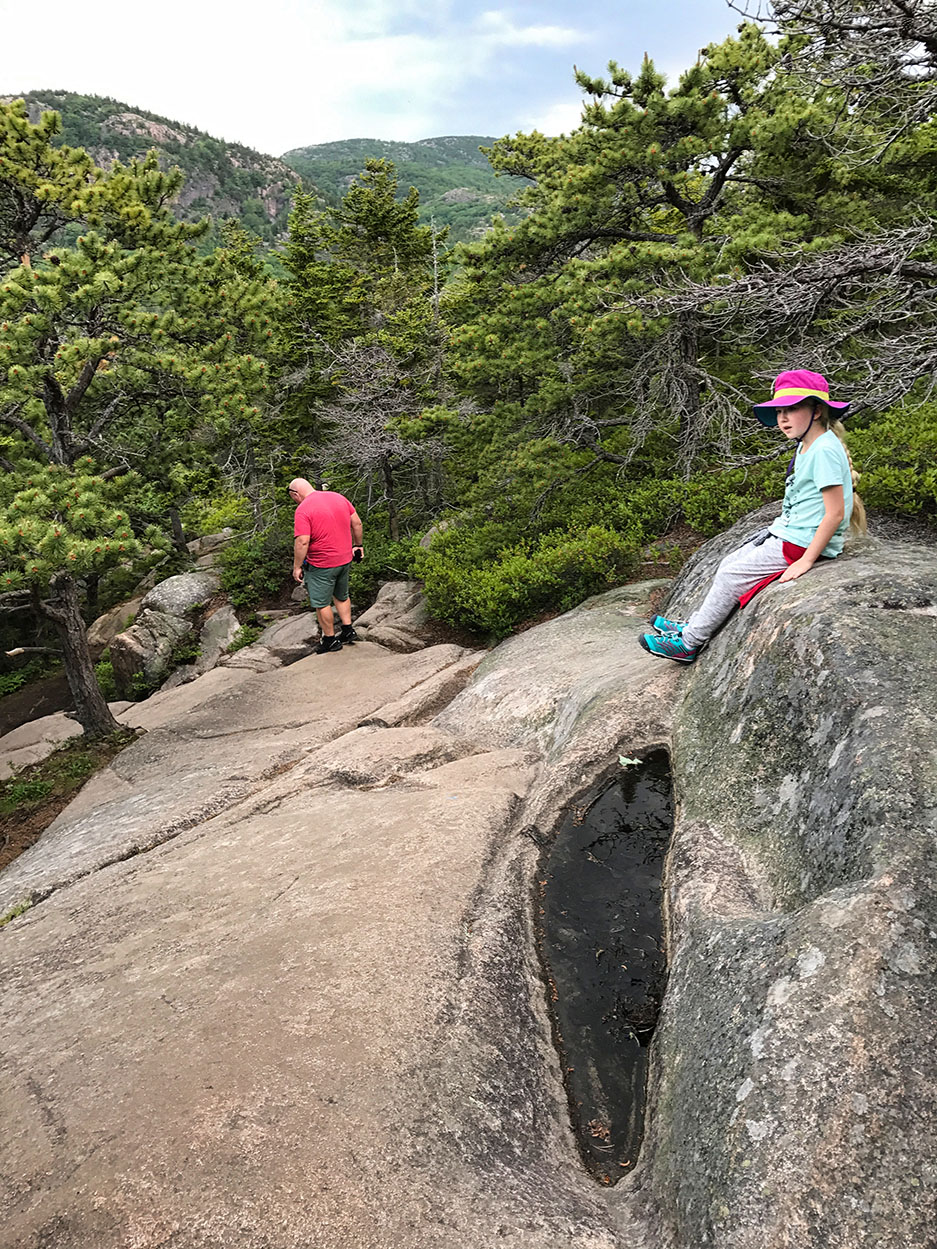
4. Staying Social On The Road
It’s important for traveling families to remain social while traveling. Maintaining relationships back at home while making new ones are an important part of adjusting to and loving this family adventure.
Staying Connected To Loved Ones Back Home
Being on the road doesn’t mean you have to lose touch with your family and friends back home. Thanks to technology, staying connected has never been easier. Some ideas to maintain those connections include:
- Regular phone calls and video chats
- Sending postcards with travel updates and letters
- Sharing photos and updates on social media
Meeting New Friends And Connecting With Other RV Families
An important daily living part of full-time RV living with kids is building relationships with other families on the road. Traveling can be a great way to meet new people who share similar lifestyles. Some ways to connect with other RV families include:
- Joining online RV communities and Facebook groups such as Fulltime Families
- Attending RV rallies and local family events
- Attending campground events and activities
- Hanging out at the campground pool
- Inviting campground neighbors with kids to a campfire or to have a cookout
- Joining Xscapers and attending Convergences, which are get-togethers specifically for working-age RVers and RV families
Xscapers are Escapees RV club members that are working-age RVers. This valuable segment of the club is an active group providing social activities, outdoor adventures, and lifestyle education. Check the calendar for a Convergence event near you!
5. Adopt A Slower Travel Pace With Kids
Worn Out Kids Are Unhappy Campers!
When you’re full-time RV living with kids, it helps to travel more slowly. Traveling far and fast can leave your children exhausted and unhappy, leading to a loss of interest in the adventure and, ultimately, making them feel like they’re just going through the motions.
Even adults can quickly start to burn out when traveling too fast. To prevent this, try to slow down your travel schedule and allow for plenty of downtime to ensure your kids remain engaged and excited about your family adventure.
Leave Time For Daily Living, Rest, And Hobbies
When making the adjustment to RV living, it’s important to leave time for hobbies that your children used to love when living in a house. Kids need plenty of downtime to play, rest, do crafts or art, and just be kids.
If you fall into the trap of always being on the go, they may begin to miss their old life. Allow plenty of time for daily living along with your travel activities. It may take a while to find the right pace of travel that works best for your family.
We traveled way too fast the first year, and all started to feel burned out. In the second year, we slowed things down and began to find our groove. Don’t be afraid to change plans and take a break if needed.
6. Tame The Clutter
A large challenge families face when RV living is staying organized. Things quickly get out of control when you live in such a small space.
Avoid The Dreaded Shoe Pile By The Door
The worst of the worst for families is usually what to do with the shoes. The shoe pile by the door can quickly drive everyone crazy. Consider finding a by-the-door RV shoe storage solution right away to avoid this issue.
You can put a hanging shoe organizer by the door. Another great by-the-door shoe storage option is IKEA’s Trones shoe storage cabinet. Both of these options take up little to no floor space but also keep shoes ready to grab and go.
For shoes worn less often, you can find a hanging shoe organizer that goes all the way around the RV master bed under the mattress. The canvas or fabric shoe pockets hang on the bed frame and are usually hidden by the mattress overhang. It holds so many shoes while still keeping them tucked out of the way.
Kids Toys
When living in an RV full-time with kids, it’s helpful to prioritize quality over quantity when it comes to toys. Since space is limited, encourage your kids to choose their favorite toys and make smart storage decisions to keep their play area organized.
One of the benefits of RV living is the increased opportunity for outdoor activities. RV kids tend to be a little more unplugged than their peers, which can really be refreshing to see.
You can encourage your kids to explore their surroundings and embrace the adventures that come with the great outdoors during your family adventure. This can mean fewer toys are needed because nature becomes their new playground.
Embrace The Mess
While it’s helpful to stay as organized as possible, it’s also important to accept that messes and chaos are inevitable when living in such close quarters with your children. Embrace the chaos and remember that it’s all part of the adventure.
Utilize creative storage solutions like under-bed storage, vacuum-sealed bags, collapsible bins, and hanging organizers to keep things tidy, but give yourself some grace when things don’t go as planned. The memories you’re making with your family far outweigh the clutter that comes with full-time RV living with kids.
7. Carefully Plan Out Your RV Travel Days With Kids
RV travel days with kids can go much smoother when you plan ahead. Long travel days can be exhausting for both kids and adults, so consider breaking trips into shorter travel days with kids in tow.
Plan Bathroom Stops
When planning your full-time RV life with kids, it’s essential to consider how often you’ll need to take bathroom breaks. Be sure to plan bathroom stops on your route that match how long your family can go between stops and that will safely accommodate your RV size. Locate suitable places to park your RV along your route, such as rest areas, truck stops, and some big store parking lots.
Low Mess RV/Truck Snacks
To keep the hangry at bay, pick low-mess healthy snacks to have on the road. Choose easy-to-eat options such as grapes, applesauce pouches, trail mix, string cheese, and granola bars. Also, consider just sticking to water to help keep the mess down and also to limit the number of bathroom breaks needed.
Pack Special Travel Day Only Activities To Keep Kids Entertained
Fun and engaging activities can make travel days more enjoyable for your children. Pack special car-only activities that they can look forward to, such as coloring books, travel-sized games, puzzle books, audiobooks, or even educational apps on a tablet. Having exclusive travel day activities can make those days more fun and also prevent the kids from getting bored with the same games and toys they have in the RV.
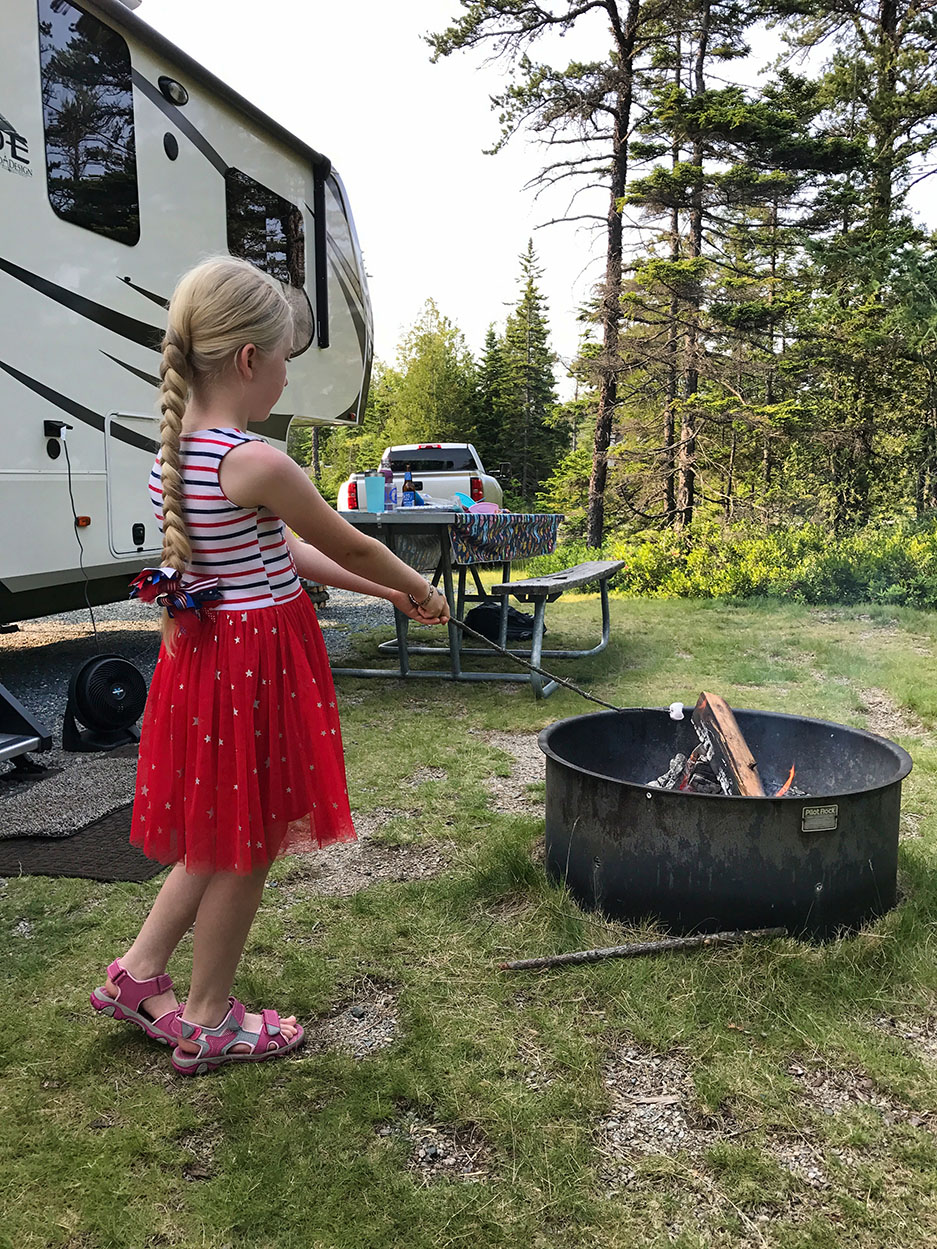
8. Avoid The Comparison Trap: Is My Child’s Life On The Road “Normal” Enough?
Comparing your family to other families is always a slippery slope best to be avoided. Remember that each family is unique and has a different way that works for raising children. Rather than focusing on comparison, embrace the unique experiences and adventures you and your children embarked on by living in an RV.
Your Child Is Gaining Non-Traditional Childhood Experiences
Your child is probably not going to be playing organized sports or a part of a local club, but they are gaining other unique experiences. Your kids are exploring new locations like national parks and trying out outdoor activities that they may have never experienced while living in a house, like paddling, biking, hiking, and ranger programs.
They are also meeting new people from all over the country and experiencing different cultures and communities. RV living is a unique lifestyle that you just can’t compare to traditional living for kids.
Once In A Lifetime Learning Experiences
Living in an RV provides your child with access to irreplaceable real-life learning experiences. They will be able to learn geography, history, and nature firsthand, as opposed to just reading about it in books.
Visiting historical sites, exploring diverse ecosystems, and witnessing natural wonders of the world can stimulate their curiosity and engage them in a way textbooks may never be able to. All of this is while making memories together as a family to last a lifetime. This lifestyle is a new normal that simply can’t be compared to the experiences found in a more traditional childhood.
Full-Time RV Living With Kids Can Be Incredibly Rewarding
Embarking on a full-time RV living adventure with your family can be an incredibly rewarding experience. While full-time RV living with kids can present its challenges, the rewards far outweigh the obstacles. You’ll create lasting memories, develop deeper connections, and instill a sense of adventure in your children that will last a lifetime. So, if you’ve been contemplating the idea of full-time RV living with your kids, go for it!
Did you like this post? Pin it on Pinterest!
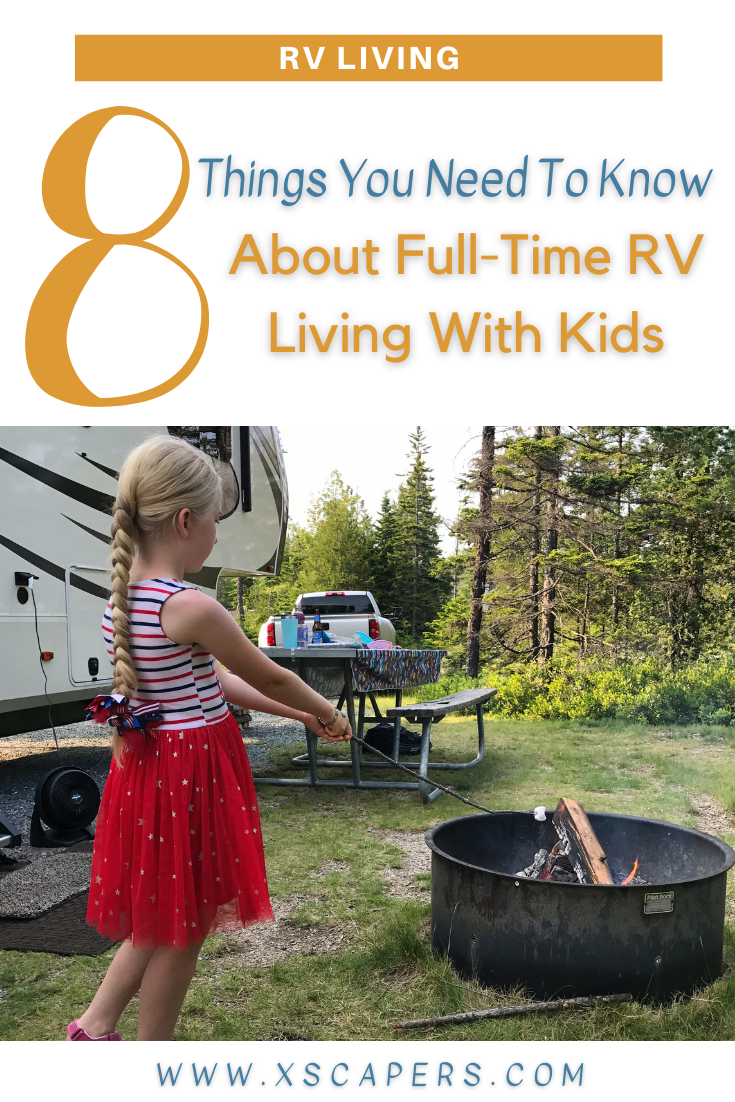
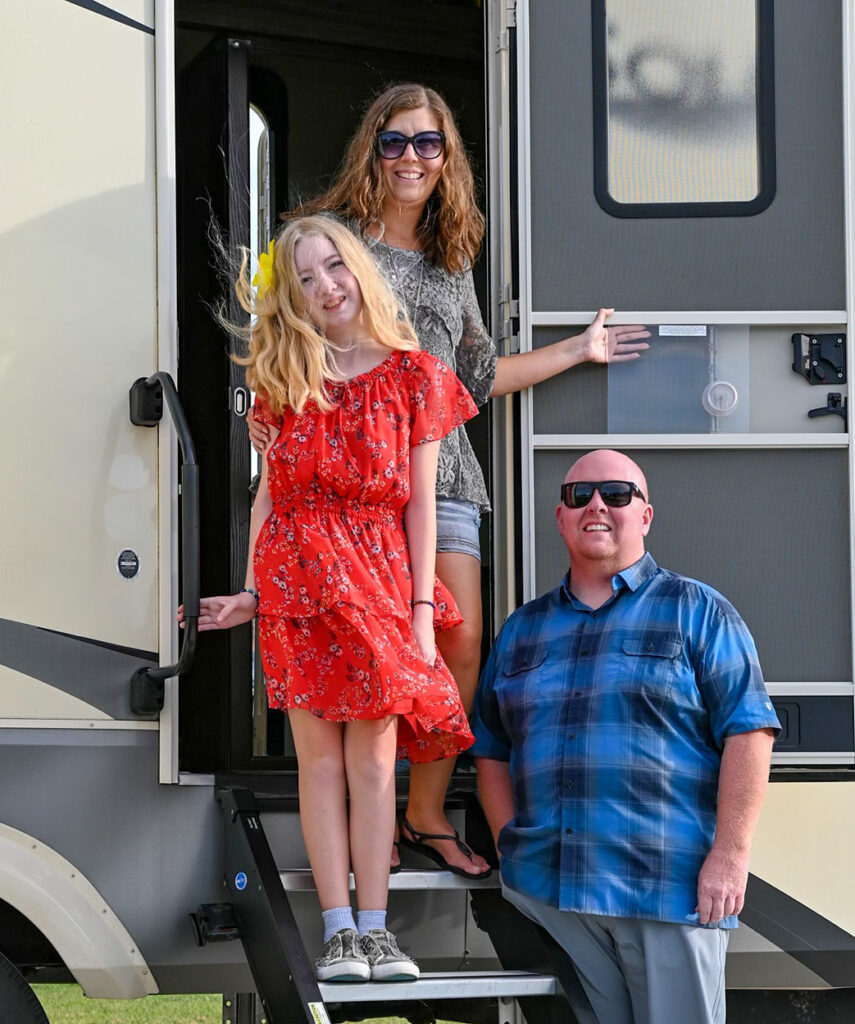
Author
Scott Russell
Scott, his wife Van, and their 13-year-old daughter have traveled full-time in their RV for 8 years. They have worked and homeschooled on the road through 42 states so far. They blog about RVing tips, travel destinations, and the full-time RV lifestyle at TheAdventureDetour.com and RVNomadJobs.com. They are also RV content creators @theadventuredetour on Instagram, TikTok, YouTube, and Facebook. They love connecting with RVers so be sure to reach out to them and say hi!

 Previous Post
Previous Post